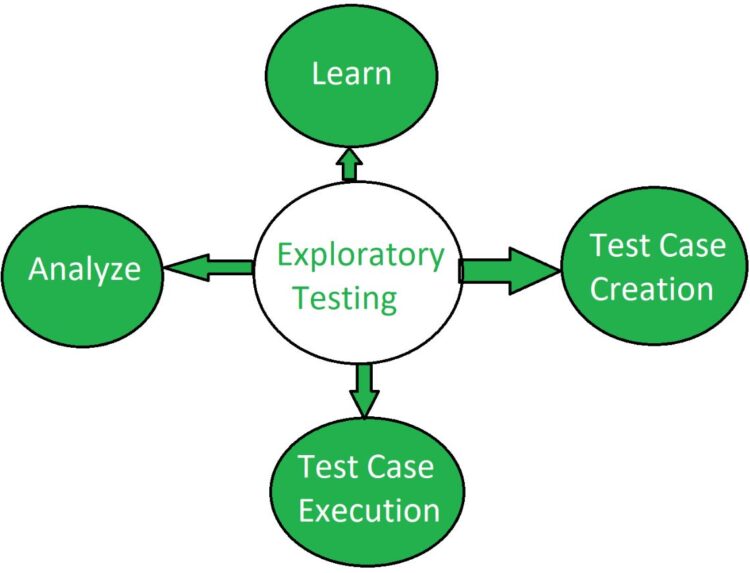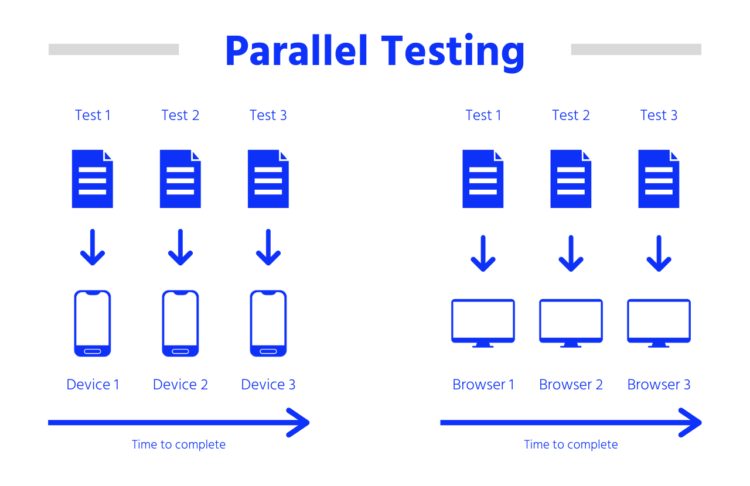We all know that automated software testing is a critical component of successful development projects; it can shorten the development cycles, help us avoid repetitive tasks, and improve software quality. But do you know how to do it effectively? Below are 14 tips that can help you get the maximum return on investment from automation testing.
Let’s get started!
Page Contents
Best Automated Testing Tips For 2024
1. Improve Team Coordination

Source: http://processgroup.com/
If your team is not well coordinated and motivated, you can’t be successful with test automation. So, establishing a collaborative environment is vital. Healthy coordination between the developer and QA engineer is critical to comprehensively view the requirements and cost estimates to ensure test automation success. So, all members of the team must be involved in defining test automation goals and setting priorities. An online collaboration tool is necessary to communicate well and cooperate with your co-workers, so pick your collaboration tool wisely.
2. Identify the Test Cases To Be Automated

Source: realpython.com
Anyone who works in test automation knows how tricky the process can be. The automation of the entire test process is intricate. When we incorporate automation, we realize that there are many approaches through which we can do it. But only a few courses make it possible for us to be competitive in the long run. So it is essential to define the right test cases which need to be automated first. Repetitive test cases involve enormous data, runs on multiple operating systems/browsers, and are prone to human errors, especially suited for test automation. I would suggest you determine the amount of automation testing needed depending on your project.
3. Choose the Right Automation Testing Tool

Source: testautomationresources.com
Tools can help or hinder your test automation efforts, so pick them wisely. There are various automation tools available in the market, and selecting from them can be challenging. It is crucial to choose an automation tool that is suitable for your testing standards. While selecting automation tools, you should thoroughly examine your organization’s objectives and requirements and what technologies can best fit your automation goals. For example, LambdaTest is an amazing tool that will help you out with this.
Here are the key points that you should look for while choosing an automation tool:
- What type of application are you testing for automation, i.e., web applications, mobile application, or desktop application?
- On what platform you want to test your application. Ensure your tools and technology is compatible with the platform.
- Compare your existing framework, the problem you have, and the automation tool or framework you are using to solve those problems.
- Choose a tool that can provide reusability and have a record – playback feature.
4. Set Right Expectations

Source: peoplescience.maritz.com
100 % automation is a myth – don’t fall for it. There are a few areas where human intervention will always be necessary. Several tests actually cannot be automated. Automate a test only if it is feasible. Pay attention to the details so that you can achieve the best possible outcomes to optimize the quality of our product. You can start by concentrating on the flow that is the easiest to automate.
5. Use Skilled Automation Experts

Source: openedition.org
To implement test automation successfully, you need to create a test automation strategy. Not everyone can make a good strategy; you need highly skilled automation experts to do that – the ones who clearly understand the architecture and deployment part. Also, it would be best if you had experienced testers. Your software tester should have the ability to express ideas clearly between developers and the QA team. To ease up your work-process and save time, use docker images to make your work even faster.
6. Create High-Quality Test Data For Testing

Source: medium.com
We all know that testing is the backbone for attaining the software’s quality, but do you know that test data is the core of it? High-quality test data are essential for proper testing. It is vital to ensure that the information is accurate, valid, and updated, encompassing almost all of the system’s scenarios. Choose your test cases carefully, the ones that can help you in achieving your objectives. It is necessary to optimize these test cases using reusable components; to use them across different scenarios. Creating testing data for automated testing can be stressful, time-consuming, but it offers many benefits; thus, you should spend a significant deal of time and effort to create well-structured data.
7. Assign Task based on Expertise

Source: lifeskills.ge
Not every member of your testing team can perform every task. Since automation has to be a collective endeavor, it is vital to give each member the tasks they are skilled in. To do this, you need to conduct regular meetings with your team members and find out their core skills and expertise.
8. Prioritize Regression Test Cases

Source: medium.com
Whenever we commit any changes to software, to ensure its functionality, regression testing is required. It can be made effective by prioritizing the test cases to be repeated. It can prove to be a cost-effective method when you have a budget limitation. Testers can benefit from automating regression tests by liberating them from repetitive and boring tests, which will enable them to concentrate on more complicated test cases. It is better to begin automating unit tests, which are less fragile and prone to break.
9. Use Exploratory Testing

Source: geeksforgeeks.org
An automated solution does not cover user interface problems, but only executes the behavior you tell them to do. To solve this problem, you should use exploratory testing. Manual testers can quickly determine what actions are lacking utilizing exploratory testing. It allows one to answer questions about various test scenarios.
10. Always Analyse Your Test Results

Source: medium.com
There are several tests carried out by the testing team that it is essential to analyze the results precisely. After carrying out the test, you should carry out a detailed test report. It is necessary to evaluate failures, analyze, and report why specific tests have failed. Tests analysis can help you remove non-relevant and redundant data. It should prove to be a cost-effective method and reduce your efforts as well.
11. Go For One Assertion Per Test Case

Source: slideserve.com
Asserting multiple statements in the same test case is worthless. With one statement in each test, it’s actually much easier to see what’s incorrect. You can create reusable components with the automation tool and reuse them in other test cases, which significantly reduces the time needed to construct a new test case. You can create independent test cases that logically check one aspect and can be executed anytime across multiple OS/browsers.
12. Use Parallel Testing For Complex Test Suits

Source: bitbar.com
Complicated test suites take longer to run than anticipated, affecting the test queue’s performance in your test automation system. The sequential implementation of test cases can hurt your test automation efforts. Parallel execution enables the execution of multiple tests over different hardware and configuration at the same time.
13. Leverage Codeless Automation

Sources: msystechnologies.com
As the name says: Codeless test automation allows you to conduct your test automation without writing a single code line. It helps testers to build test cases inside a built-in Interface. You don’t need to have expertise in coding; codeless automation does all your work. It intensifies the development process and offers enriched automation performance. Therefore, you get more time for exploratory testing and exploring product performance.
14. Effectively Measure The ROI of Your Test Automation

Source: technians.com
We all know that measuring our test automation efforts’ ROI is super essential, but you need to pay attention to several other things before starting the measuring process. Try to find out how much time developers spend writing test scripts and maintenance. Whenever you recruit QA engineers, look for the cost of training and other findings that you will invest in them. Humans are likely to make errors; if your team overlooks anything during the development cycle, you should take that into account while calculating ROI. Factoring these savings in your ROI calculations is another way for QA to give value to your business.
Wrapping Up!
Most organizations have already adopted automation testing, but there are very few who are doing it effectively. Hopefully, with these tips, you can move your automation testing to the next level, and thank you for reading!





